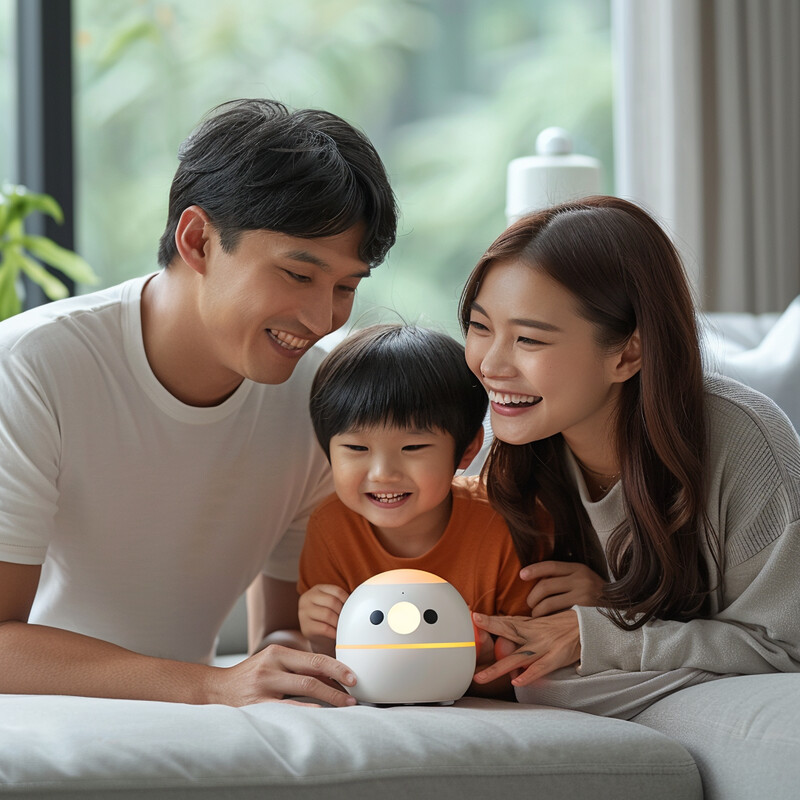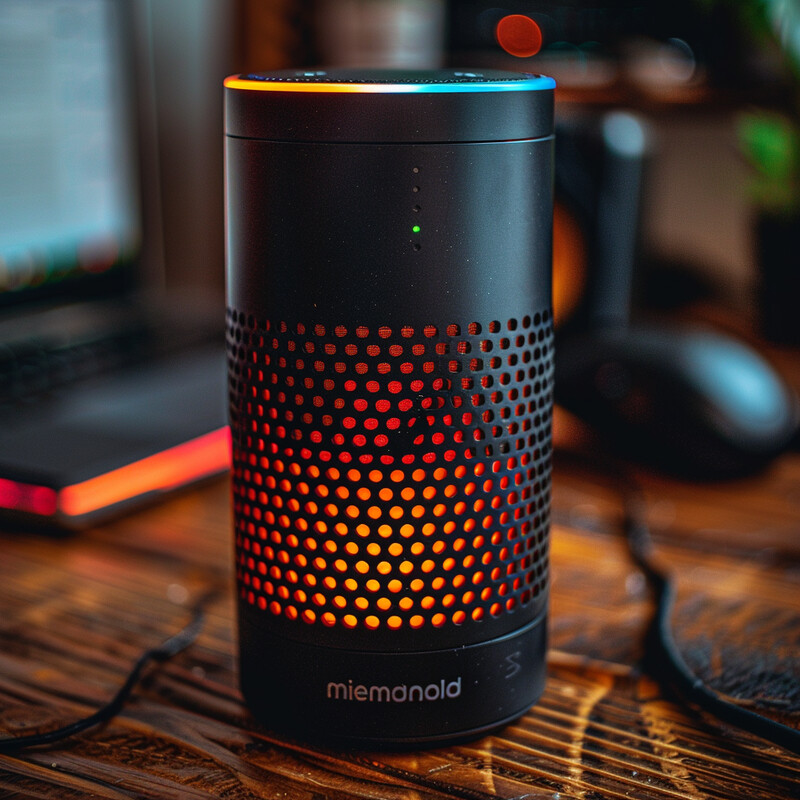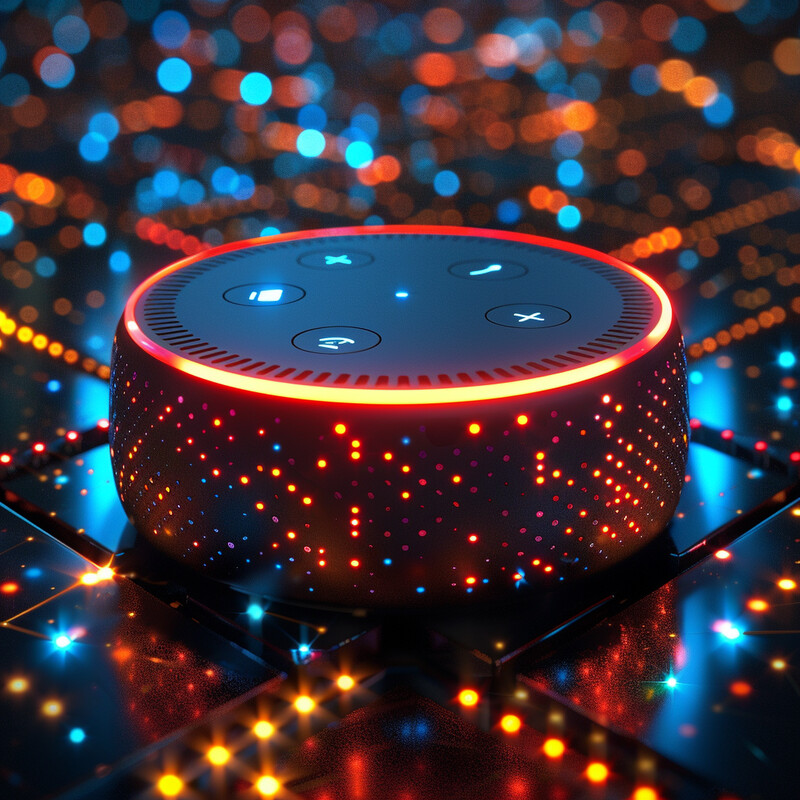1. Improved Speech Recognition
AI has dramatically enhanced speech recognition accuracy for voice-activated devices. Modern voice assistants use deep learning models trained on vast audio datasets to understand spoken commands more reliably, even in noisy environments or with diverse accents. This means voice interfaces can now approach human-level performance in transcribing speech, reducing errors and frustration. Continuous AI-driven improvements have made interactions more natural, as users don’t need to repeat themselves as often. Overall, AI’s advanced pattern recognition and noise-filtering capabilities have made voice recognition faster and more precise, laying the foundation for all other voice assistant features.

In fact, recent research shows that AI systems can equal or surpass human listeners in certain conditions. For example, a 2024 study found that OpenAI’s Whisper speech recognition model outperformed human transcribers in noisy settings, achieving extremely low . Such AI models required massive training data (Whisper was trained on the equivalent of 75 years of speech) and have driven word error rates down to around 5% or less – approaching human parity in recognizing speech. This level of accuracy was virtually unattainable a decade ago and underscores how AI has improved voice recognition dramatically.
2. Natural Language Processing (NLP)
AI-driven Natural Language Processing (NLP) enables voice-activated devices to better grasp what we mean, not just what we say. Advanced NLP models let assistants understand context, intent, and even subtle phrasing in our commands. This means you can have more conversational, multi-turn dialogues with a voice assistant – asking follow-up questions or using casual language – and it will still understand you. AI NLP also helps the device handle indirect requests or ambiguities by analyzing the broader context. The result is more fluid, human-like interactions; you don’t have to phrase things in a rigid way, because the AI is smart enough to interpret your natural speech patterns.
-1.jpg)
A recent upgrade to Amazon’s Alexa illustrates how far NLP has come. In 2025, Amazon introduced “Alexa+” powered by a generative AI language model to make the assistant much more conversational. Alexa+ can remember the context of previous interactions and carry on a back-and-forth conversation instead of handling one command at a time. In a live demo, Amazon showed Alexa+ understanding an open-ended query (asking if anyone walked the dog) by intelligently checking smart camera data and responding with the relevant info – something earlier assistants couldn’t do. This context-awareness is possible because of AI NLP advancements, allowing Alexa to maintain conversational context and understand complex, nuanced requests.
3. Personalized Responses
AI allows voice-activated devices to tailor their responses to each user. By learning from an individual’s preferences, habits, and history, the device can give personalized answers and suggestions. This might mean your smart speaker remembers your favorite music or news sources and prioritizes those, or adjusts its tone based on how you typically interact. Over time, AI personalization makes the assistant feel more like it “knows” you – offering relevant recommendations (e.g. suggesting a recipe using ingredients you have) or adjusting its approach (e.g. simplifying explanations for a child user). This individualized touch, powered by machine learning algorithms, makes interactions more engaging and efficient for every user.

Research confirms that personalization boosts user satisfaction. A 2023 study in the International Journal of Human-Computer Studies found that users rated a voice assistant more trustworthy and likable when its personality or voice was tailored to their own personality. In the experiment, participants who got to choose a voice similar to their personality – or whose assistant automatically matched their style – had significantly more positive interactions and trust in the assistant than those with a one-size-fits-all voice. This evidence shows how AI-driven personalization (like selecting a preferred assistant voice or remembering a user’s behavior) can make voice devices more effective and enjoyable for individuals.
4. Proactive Assistance
AI enables voice-activated devices to assist you proactively, not just reactively. Rather than waiting for explicit commands, modern voice assistants can anticipate needs and offer help unprompted. They learn your routines and patterns – for instance, knowing that you leave for work at 7:30 AM – and can predict what information or action might be useful (like volunteering the traffic report or suggesting “Do you want me to start your coffee?”). Proactive AI also means the assistant can monitor contexts (like your calendar or the weather) and give you timely alerts (reminding you “You have a meeting in 10 minutes” or suggesting “Take an umbrella; it’s likely to rain”). This kind of assistance feels like a helpful concierge that anticipates requests before you even ask, made possible by AI analyzing data and patterns over time.

We saw a compelling example of proactive AI assistance during Amazon’s 2024 demonstrations. The upgraded Alexa was able to initiate helpful actions on its own, thanks to its new AI brain. In one demo, an executive casually asked, “Alexa, has anyone walked the dog lately?” – and Alexa intelligently pulled data from a connected smart camera to answer the question, without being explicitly told to do so. This showcases AI’s ability to integrate context and take initiative. Moreover, Amazon reports that the latest Alexa will even suggest actions (like offering to order groceries when you’re low on staples) and handle multi-step tasks proactively. These advances underscore how AI-driven voice assistants can go beyond simple reactions to become truly proactive helpers in daily life.
5. Multilingual Support
AI has greatly expanded multilingual capabilities in voice-activated devices. Today’s voice assistants can understand and speak multiple languages, often even within the same conversation, thanks to robust language models. This is a huge benefit in multilingual households and for global users – you can speak to the device in your preferred language, and it will respond appropriately or even translate. AI models learn the nuances of dozens of languages and can switch on the fly, enabling seamless bilingual interactions (for example, answering a question in Spanish right after one in English). Additionally, advanced AI translation features allow voice devices to serve as real-time interpreters. In short, AI has broken language barriers, making voice assistants useful to non-English speakers and enabling cross-language communication in ways that were not possible before.

The scale of AI’s multilingual leap is astonishing. In 2023, Meta (Facebook) open-sourced a voice AI model that supports automatic speech recognition in over 1,100 languages – a tenfold increase over previous systems. This “Massively Multilingual Speech” project demonstrated AI’s ability to learn from a diverse speech corpus and handle languages ranging from common to extremely rare. By comparison, a few years ago consumer voice assistants supported on the order of 10–20 languages. Now, Google Assistant alone operates in more than 30 languages across 90+ countries, and AI models like Meta’s are pushing that boundary into the hundreds. Such progress, driven by AI, means voice-activated devices can cater to users in their native tongue and even perform real-time translation between languages – something already being piloted in voice platforms.
6. Integration with Smart Home Devices
AI makes voice assistants powerful hubs for smart home control. With AI, a voice-activated device can coordinate commands across various smart devices – lights, thermostats, locks, appliances – in a smooth, context-aware way. Instead of manually programming each scene, you can give natural spoken instructions (“I’m leaving now”) and the AI interprets what that means (lock the doors, turn off lights, adjust the thermostat). This intelligence comes from AI learning typical user behaviors and the states of devices. Integration is more seamless – for example, an AI might know to confirm a security command if the door is already unlocked. Essentially, AI allows voice assistants to understand complex or compound commands (like “Set the living room lights to warm and play jazz music”) and execute them reliably by communicating with multiple devices. This unified control through AI makes managing a smart home easier and more intuitive.

Smart home integration is a top reason people adopt voice assistants, and it’s growing. In a 2022 industry survey, 53% of smart speaker purchasers said they want to use voice commands to control smart home devices in their homes. This reflects in usage trends – by 2021, about one in three smart speaker owners were already using them to control lights, thermostats, and other gadgets. For instance, Google and Amazon enabled voice-triggered routines (like a “good night” command that locks doors and dims lights). Users have embraced this: voice-controlled smart home actions increased significantly over five years, as AI improvements made device linking more reliable. The demand and data underscore that AI-driven voice hubs are becoming central to home automation, letting people manage their homes by simple speech – a direct result of better AI integration under the hood.
7. Emotion Recognition
AI is giving voice-activated devices the ability to detect emotions from your voice. By analyzing speech patterns – tone, pitch, pace, and volume – AI can infer if a user is happy, frustrated, upset, or calm. This emotional awareness means the assistant can respond more empathetically or appropriately. For example, if you sound stressed or annoyed, an AI assistant might soften its tone or offer help (“I’m sorry you’re having a tough day. How can I assist?”). If it detects excitement or joy, it might respond in kind. Emotion recognition can also trigger the device to adjust its behavior (like not repeating a long apology if it senses the user is already very frustrated). This human-like sensitivity is entirely driven by AI models trained on vocal emotion data. It aims to make interactions feel more natural and caring, as the device “tunes in” to your mood and adapts its responses for better user experience.

AI’s ability to recognize emotion in voice is increasingly accurate. In laboratory settings, machine learning models have exceeded 90% accuracy in classifying basic human emotions from speech . For instance, one 2021 study achieved about 93–95% accuracy when detecting emotions like happiness, anger, sadness, etc., on standard speech datasets. These high accuracies are recorded in controlled conditions, but they demonstrate the progress: just a few years ago, such models struggled with reliability. Tech companies are beginning to incorporate these advancements; Amazon has patented technology for Alexa to sense a user’s emotional state, and some call centers already use AI that flags customer emotions in real time. While real-world accuracy is lower than in the lab, the trend is clear – AI is increasingly capable of reading our voices for emotional cues, and voice assistants are starting to use that to adjust their interactions.
8. Enhanced Security Features
AI is bolstering the security of voice-activated systems through voice biometrics and anomaly detection. Voice assistants can use AI to recognize individual voices, essentially serving as a voice fingerprint to verify a user’s identity. This means sensitive functions (like making a purchase or unlocking personal info) can be restricted to recognized voices, adding a layer of security beyond a PIN or password. AI can discern subtle vocal features unique to each person, making impersonation difficult. Additionally, AI helps detect fraudulent or synthetic voices (like deepfakes) by analyzing acoustic patterns. In essence, AI makes voice-activated devices not only smarter but safer – ensuring that when you ask your smart speaker to do something private or sensitive, it really is you giving the command. This personalized voice ID and constant learning of what “normal” requests sound like help prevent unauthorized access or misuse of voice-controlled systems.

Major banks have successfully deployed AI-powered voice security for authentication. HSBC, for example, introduced VoiceID in its phone banking – an AI system that verifies customers by their voice. By 2019, over 1.6 million HSBC clients had enrolled, and the bank reported that the voice biometric system had prevented more than £330 million (over $400 million) in fraud attempts within about three years. The AI listens to a caller’s phrase (“My voice is my password”) and matches it to the stored voiceprint near-instantly. It has also built a blacklist of fraudsters’ voiceprints; HSBC noted a 150% increase in catching fraudulent callers once the AI was in place. This real-world data shows AI-based voice recognition can provide robust security – thwarting impostors and giving legitimate users a hands-free, secure way to access accounts without traditional passwords.
9. Continuous Learning
AI gives voice-activated devices the ability to continuously learn and improve from experience. Instead of remaining static after purchase, today’s voice assistants use machine learning to get better with each interaction. They update their language models as they encounter new phrases, adapt to a user’s specific accent or vocabulary over time, and even learn from mistakes (if the assistant mishears and you correct it, the AI takes that feedback on board). Many of these improvements happen in the background via cloud updates or on-device learning, so the device steadily becomes more accurate and more attuned to your needs without manual intervention. This continuous learning means a voice assistant in use for a year should perform better than it did on day one – it might answer questions it couldn’t before or execute commands more efficiently – all thanks to AI algorithms that are always refining the assistant’s knowledge and skills.

Tech companies have implemented systems for voice assistants to auto-learn from user interactions. In 2019, Amazon deployed Alexa’s self-learning model, allowing Alexa to automatically correct certain errors by observing user behavior, without engineers explicitly reprogramming it. For instance, if Alexa misunderstood a request and the user rephrased it or canceled the action, the AI analyzes that outcome to adjust its future responses. An Amazon AI executive noted that this self-learning system led to significant improvements in Alexa’s understanding of phrasing and requests over time, all “without human intervention” in the loop. Similarly, Google has said its assistant uses federated learning on devices to improve speech recognition for uncommon words by learning from real usage (while keeping data private). These continuous-learning approaches ensure that voice assistants aren’t static products – they actively get smarter and more useful the more you (and others) use them, a direct benefit of AI.
10. Accessibility Features
AI-powered voice-activated devices are transforming accessibility for users with disabilities. For people with vision impairment, voice assistants allow hands-free operation of technology – AI can read out loud messages, weather, or directions that a blind user can’t see, and take voice commands to perform tasks that would otherwise require sight. For those with limited mobility or motor impairments, being able to control home devices, make calls, or send messages by voice is liberating. AI is also tackling speech impairments: voice systems can be trained (using AI models) to understand atypical speech patterns, enabling people with conditions like stuttering or ALS to use voice interfaces reliably. There are AI apps now that transcribe spoken words into text in real time for deaf or hard-of-hearing users, and others that can repeat a user’s speech in a clearer synthesized voice to help them be understood. In summary, AI is making voice technology more inclusive – giving individuals with various disabilities new independence and easier interaction with the digital world.

Voice technology usage is notably high in disability communities, highlighting its value. A 2022 survey found that 62% of people with disabilities use voice assistants regularly, compared to about 46% of the general population. This higher adoption rate reflects how helpful voice interfaces can be – for example, a blind person can ask a smart speaker for information rather than struggle with a screen reader, or someone with limited hand dexterity can control appliances by speaking. Companies are actively developing accessibility-focused voice AI as well. Google’s “Project Relate” (beta-launched in 2022) showed promising results by customizing speech recognition for users with dysarthria (slurred speech); in testing, its AI could understand and transcribe speech from people with ALS that standard voice assistants failed to recognize. These advancements indicate that AI-driven voice assistants are not only convenient gadgets but also vital assistive tools empowering millions of users with disabilities.